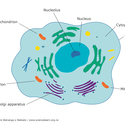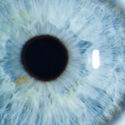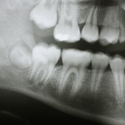Did you know that bone marrow1 contains adult stem cells? In fact, bone2 marrow transplants are the first example of a successful stem cell3 therapy and have been used to treat people with life threatening blood diseases4 since the 1950s.
What is bone marrow?
Bone marrow is a soft, sponge-like tissue in the centre of bones where blood cells are made. Bone marrow contains two types of stem cells:
- Blood stem cells
- Stromal stem cells.
Blood stem cells, which are also known as haematopoietic stem cells, can differentiate into all blood cell types, including white blood cells, red blood cells and platelets, whereas stromal stem cells can differentiate5 into fat, cartilage and bone cells.
When is bone marrow needed?
When were bone marrow transplants first used?
Bone marrow transplants are now used worldwide and are a prime example of a successful stem cell6 therapy. Find out more about the history of bone marrow transplants in this timeline.
Read about the experiences of David Vetter, the boy in a bubble, who required a bone marrow transplant.
Bone marrow transplants in New Zealand
Every year, about 160 people in New Zealand will receive a bone marrow transplant. Half of these people will receive their own bone marrow – this is called an autologous transplant. However, if this is not possible, for example, when a patient’s blood marrow is not healthy, the bone marrow must come from a tissue-matched donor – this is called an allogenic transplant. In most allogenic transplants, the bone marrow is donated by a close relative, but sometimes the donor7 is an unrelated person who is a close genetic8 match to the patient.
SNAP! The importance of matching tissue type
Matching donor and recipient tissue type is vital for the success of a bone marrow transplant. Normally, family members are the best source of compatible bone marrow tissue, but if a suitable donor is not found within the family, a suitable unrelated donor must be found.
To ensure that the donor’s and recipient’s tissues match, a sample of blood is taken and their human leukocyte antigens (HLA) are recorded. HLAs help the immune system to recognise what belongs to the body and what does not.
The donor and recipient9 tissue must have the same type of HLAs.
If the HLAs don’t match, the donated bone marrow stem cells may attack the recipient’s tissue. This is known as graft-versus-host disease10 (GVHD). In cases of GVHD, the transplanted tissue (the graft) attacks the patient (the host11) as it would for a foreign object or infection.
Collecting bone marrow tissue
Bone marrow stem cells are collected in two ways:
Bone marrow donation
Bone marrow is collected from the donor’s hip bones using a needle and syringe. This procedure is done under general anaesthetic and may require 2–3 days’ recovery time.
Peripheral blood stem cell (PBSC) donation
For this procedure, a hormone-like substance is injected into the donor for four days. This substance increases the number of bone marrow stem cells circulating in the blood. These stem cells can then be extracted by a procedure called leukapheresis. During leukapheresis, the donor’s blood is passed through a cell-separating machine that selectively removes the stem cells and returns the rest of the blood to the donor. This procedure can be done in 3–4 hours and does not require a general anaesthetic12.
What happens after a transfusion?
After a bone marrow transfusion, the recipient’s blood group will change to that of the donor.
New Zealand Bone Marrow Donor Registry
The New Zealand Bone Marrow Donor Registry (NZBMDR) was formed in 1996. They keep records of all donors in the country and their tissue types. The variety in HLA genes13 between different ethnic groups is huge and it is important for recipients to get the best match possible. To do this, the NZBMDR needs donors who represent all of the ethnic groups in New Zealand – they need Māori, Pacific Islanders and people of non-European ancestry to join. Once on the registry, only one person out of every 1,000 is ever asked to donate bone marrow stem cells.
Who can join the registry?
People can donate bone marrow if they are in good health and between 18 and 40 years old. Donors must be willing to donate a unit of blood (470 mls) and to have screening tests for viruses or other infections14 at the New Zealand Blood Service.
The NZBMDR is part of Bone Marrow Donors Worldwide – an organisation that helps patients around the world to find a compatible donor. They have been recruiting potential donors since 1988. At the end of January 2007, the number of donors worldwide had reached 11 million, in 2016 it was over 28 million.
Many New Zealand bone marrow recipients have received bone marrow from overseas donors. In a couple of cases, people on the NZBMDR have actually been the best match for patients in other countries, such as Germany and Canada.
Other sources of stem cells
Recently, stem cells extracted from umbilical cord blood have been used to replace bone marrow in New Zealand patients. As there is only a small amount of blood from one cord (100–200 mls) and only a small fraction of this actually contains stem cells, this type of transplant can usually only be used for children. However, transplants for adults have used blood from two different cords.
One advantage of transplanting stem cells from cord blood is that they are less likely to attack the recipient because the cells are ‘naïve’ and are less likely to attack the recipient’s tissue.
- bone marrow: The soft, fatty, vascular tissue that fills most bone cavities and is the source of red blood cells and many white blood cells.
- bone: A specialised form of connective tissue. The presence of the mineral hydroxyapatite helps to give bone its strength and density.
- stem cell: A cell that has the potential to become any of the specialised cell types that makes up an organism.
- diseases: 1. An abnormal condition of an organism that impairs bodily functions. 2. In plants, an abnormal condition that interferes with vital physiological processes.
- differentiate: To change into a cell type with a specialised function, such as a heart, muscle, or brain cell.
- cell: 1. Building block of the body. A human is made of millions of cells, which are adapted for different functions and can reproduce themselves exactly. 2. A simple electrolytic device that enables chemical energy to be transformed into electrical energy.
- donor: A person or animal that gives something, for example, an organ or blood.
- genetic: Of, relating to, or determined by genes.
- recipient: A person or animal that receives something, for example an organ or blood.
- diseases: 1. An abnormal condition of an organism that impairs bodily functions. 2. In plants, an abnormal condition that interferes with vital physiological processes.
- host: An organism that contains a parasite or other dependent organism. Hosts usually provide the dependent organism with food and shelter.
- anaesthetic: A drug used to prevent people from feeling pain. It can affect the whole body (general) or a particular part (local).
- genes: A segment of a DNA molecule that carries the information needed to make a specific protein. Genes determine the traits (phenotype) of the individual.
- infection: Invasion of the body or a species by something that could be harmful or cause a disease.










